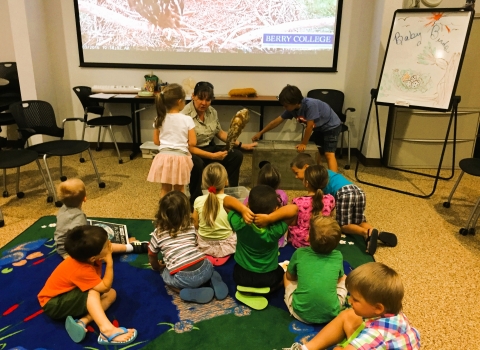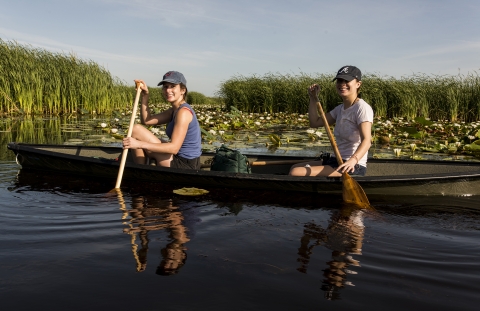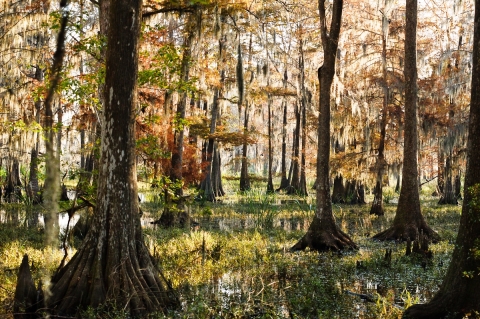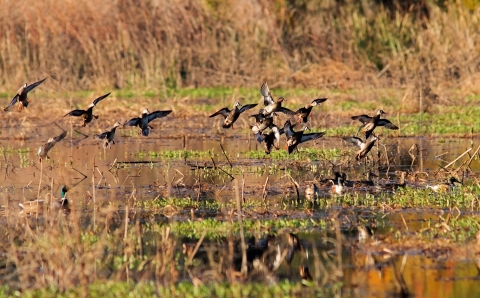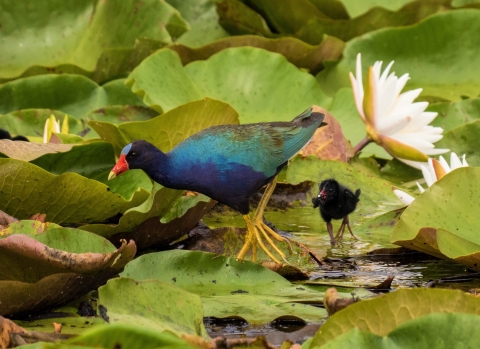Visit Us
National wildlife refuges offer us all a chance to unplug from the stresses of daily life and reconnect with our natural surroundings. There are wildlife-dependent recreational activities offered year-round at Savannah National Wildlife Refuge including hiking, bicycling, wildlife viewing, photography, fishing and hunting.
The Laurel Hill Wildlife Drive and all refuge trails are open daily from sunrise to sunset, unless otherwise posted. The Visitor Center is open Monday - Friday from 10:00 AM - 2:00 PM, excluding all federal holidays.
Dogs and other pets are not allowed on refuge trails, leashed or not.*
They may ride in your vehicle with you around the wildlife drive. In addition to protecting birds and other native wildlife from disturbance, the "no dogs" policy is also in place to protect your pup. The refuge is full of hidden dangers big (American alligators) and small (LOTS of ticks!).
*Dogs may be walked ON LEASH ONLY at Solomon Tract and in the areas of the refuge north of I-95 accessible from Purrysburg Road.
Please do not use ride services such as Uber and Lyft to visit the refuge as most sites require driving to and from, and cellular service is not always available.
Location and Contact Information
About Us
Savannah National Wildlife Refuge was established in 1927 as a sanctuary for migratory birds, most notably wintering waterfowl. The refuge lies in both Georgia and South Carolina, divided by the Savannah River, and encompasses over 30,000 acres of vital wildlife habitat, including tidal freswater marsh and bottomland hardwood forest.
What We Do
Wildlife conservation is at the heart of the National Wildlife Refuge System. It drives everything on U.S. Fish and Wildlife Service lands and waters managed within the Refuge System, from the purposes for which a national wildlife refuge national wildlife refuge
A national wildlife refuge is typically a contiguous area of land and water managed by the U.S. Fish and Wildlife Service for the conservation and, where appropriate, restoration of fish, wildlife and plant resources and their habitats for the benefit of present and future generations of Americans.
Learn more about national wildlife refuge is established to the recreational activities offered to the resource management tools used. Using conservation best practices, the Refuge System manages Service lands and waters to help ensure the survival of native wildlife species.
Our Species
The Savannah National Wildlife Refuge is an important link in the chain of wildlife refuges along the Atlantic Flyway, attracting thousands of migratory birds annually. The refuge also provides nesting habitat for wood ducks, purple gallinules, bald eagles, anhingas, and swallow-tailed kites, among others. A number of mammals, reptiles, amphibians, and countless plant species can also be found.


